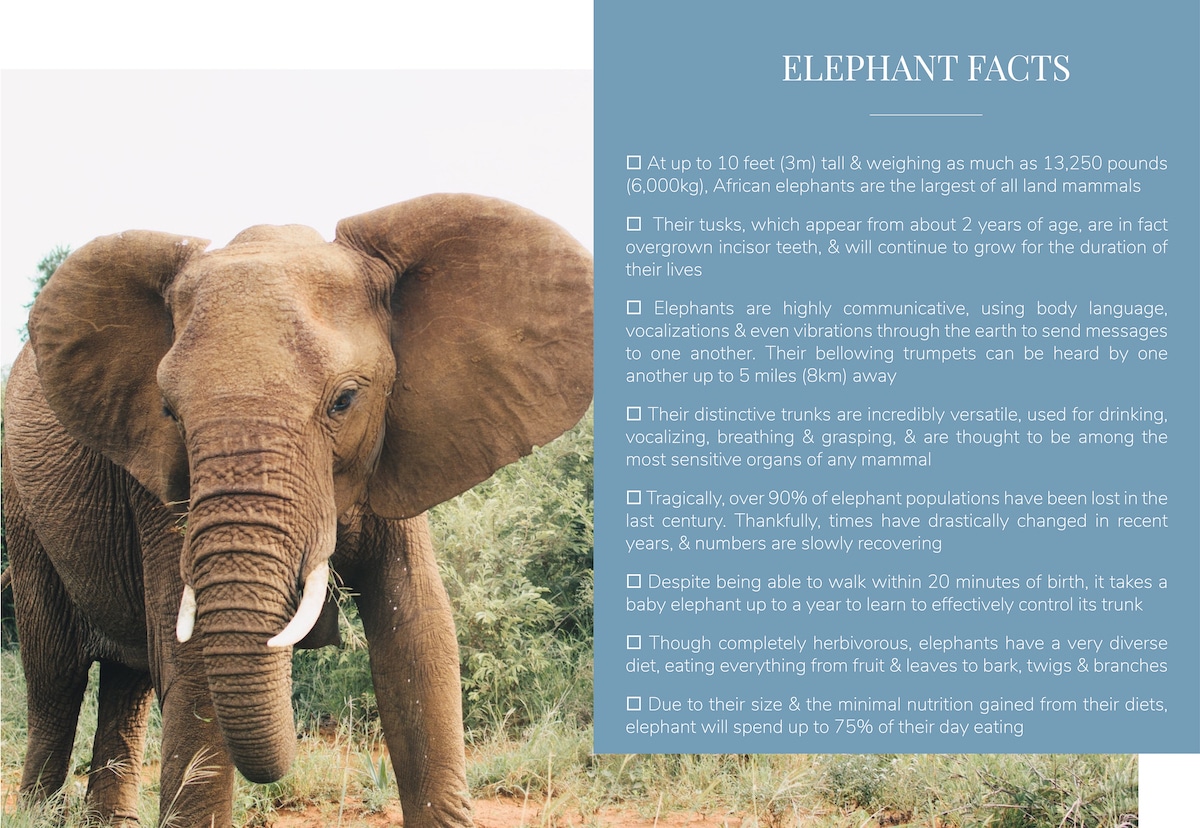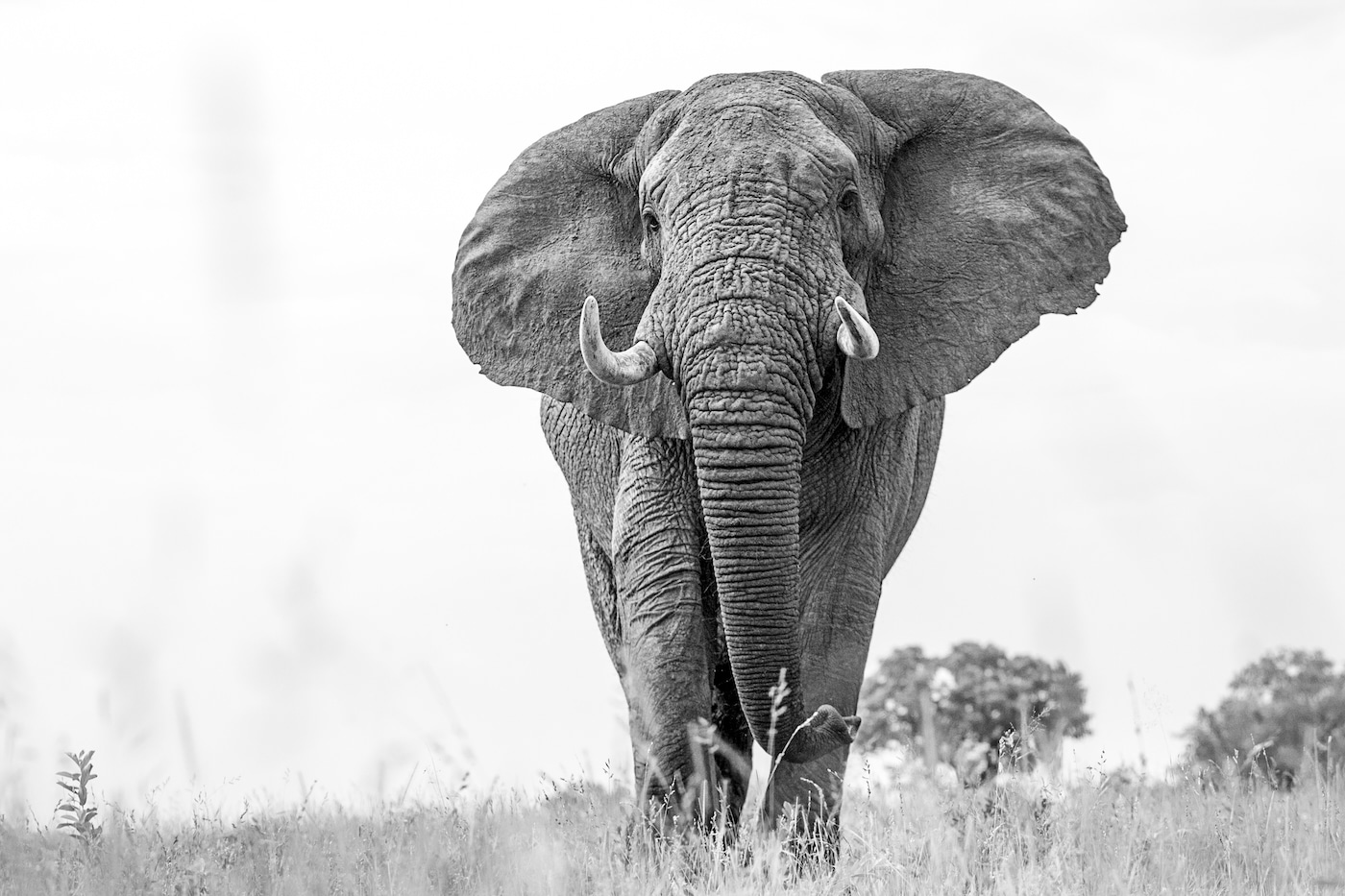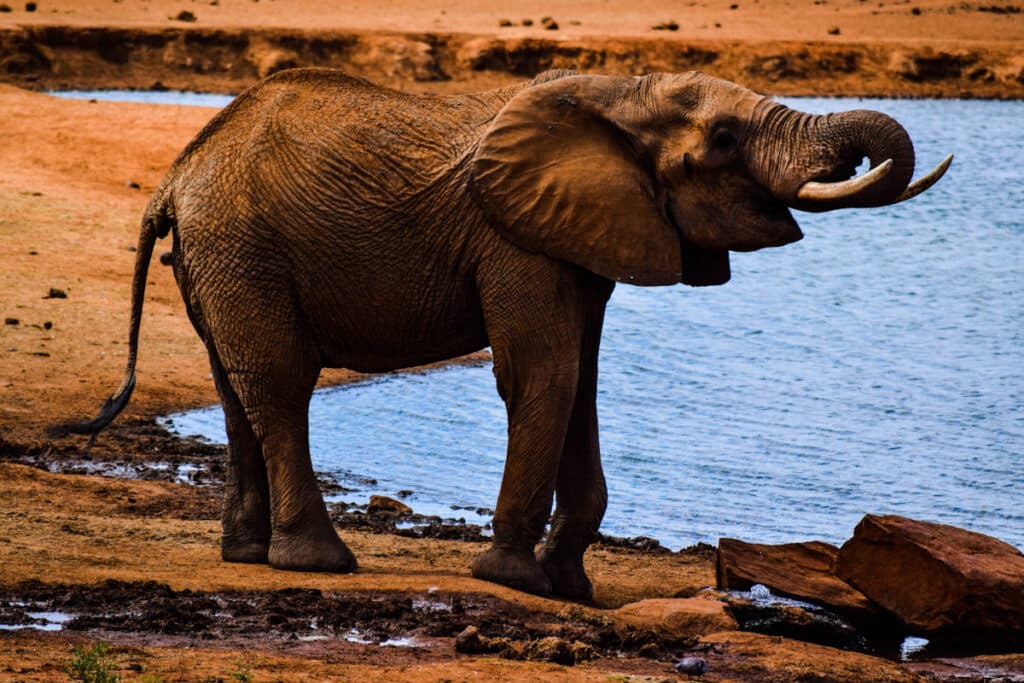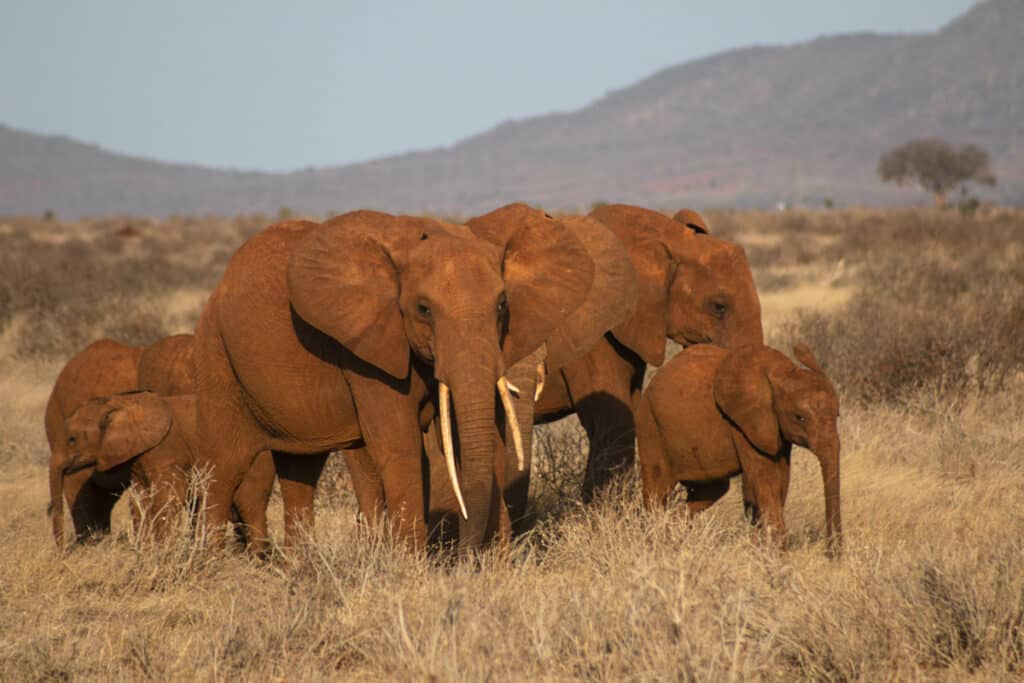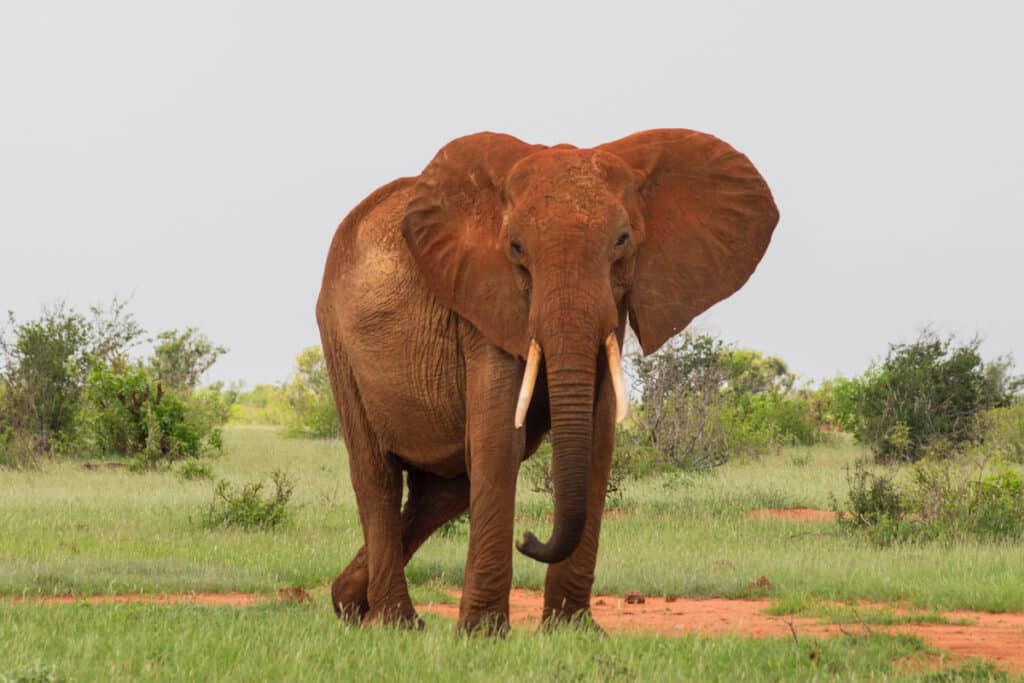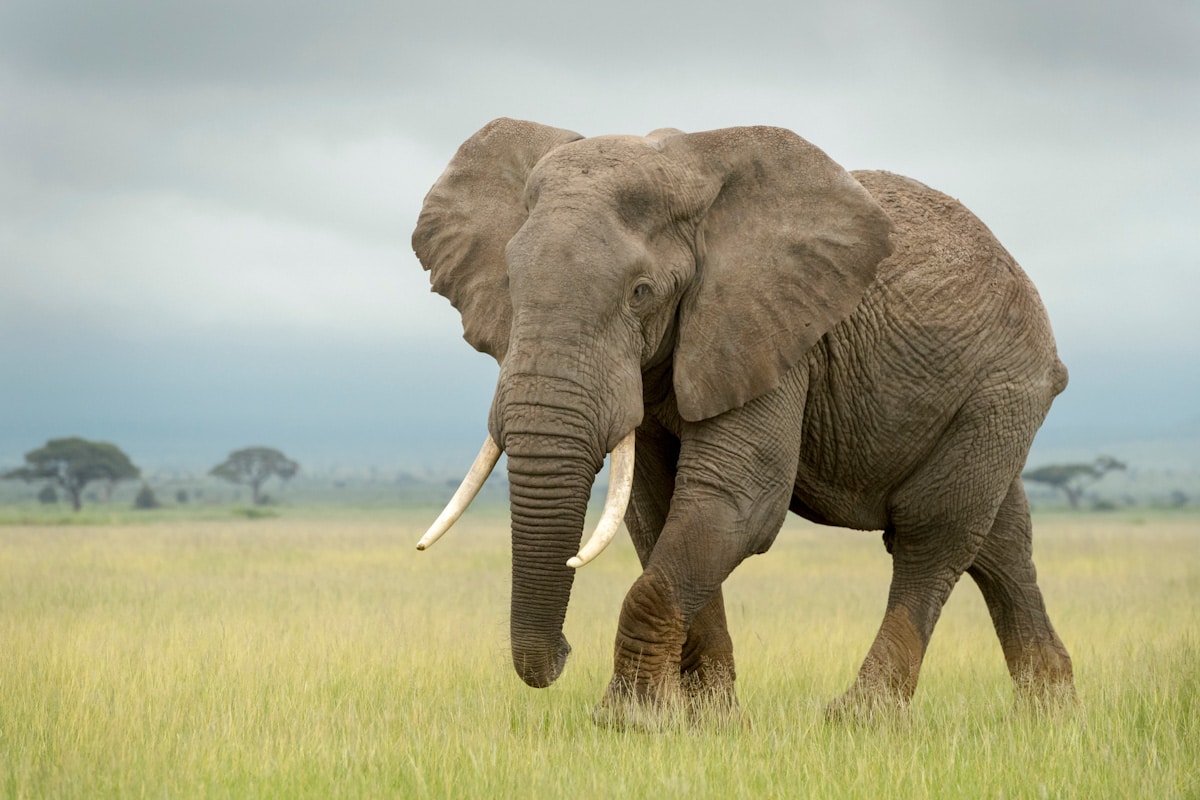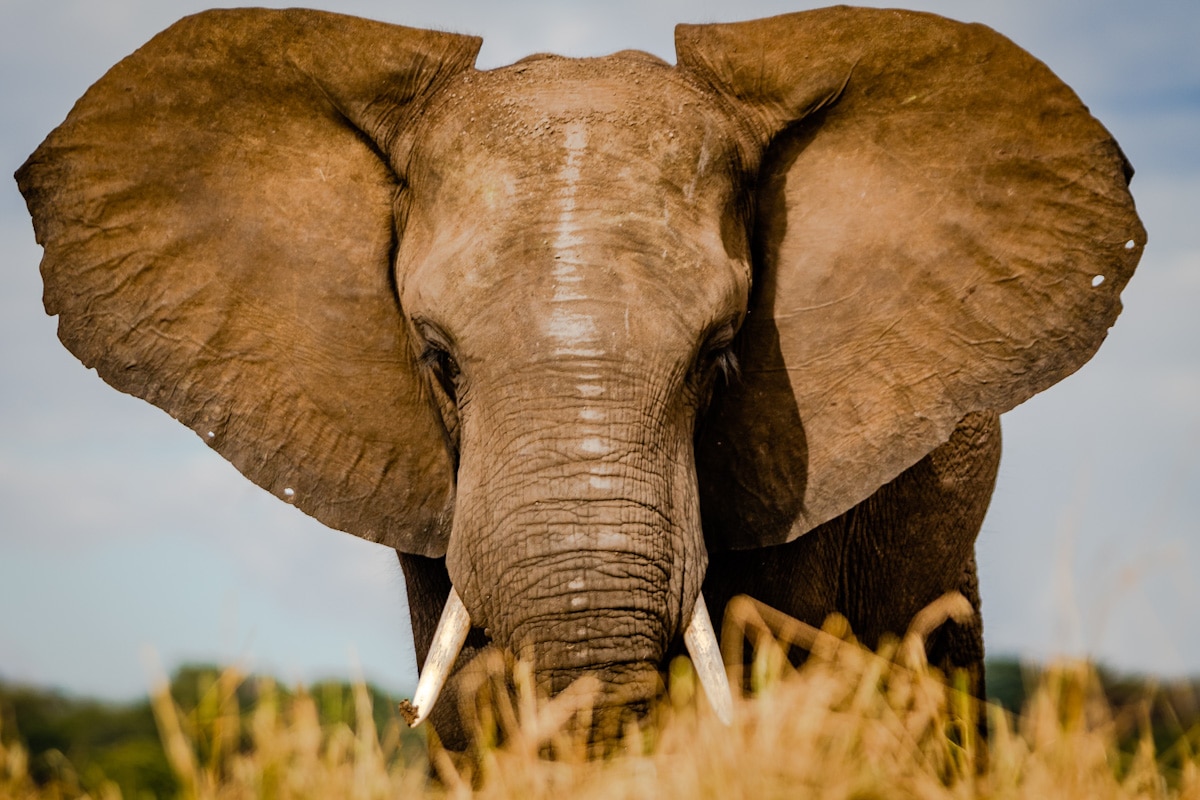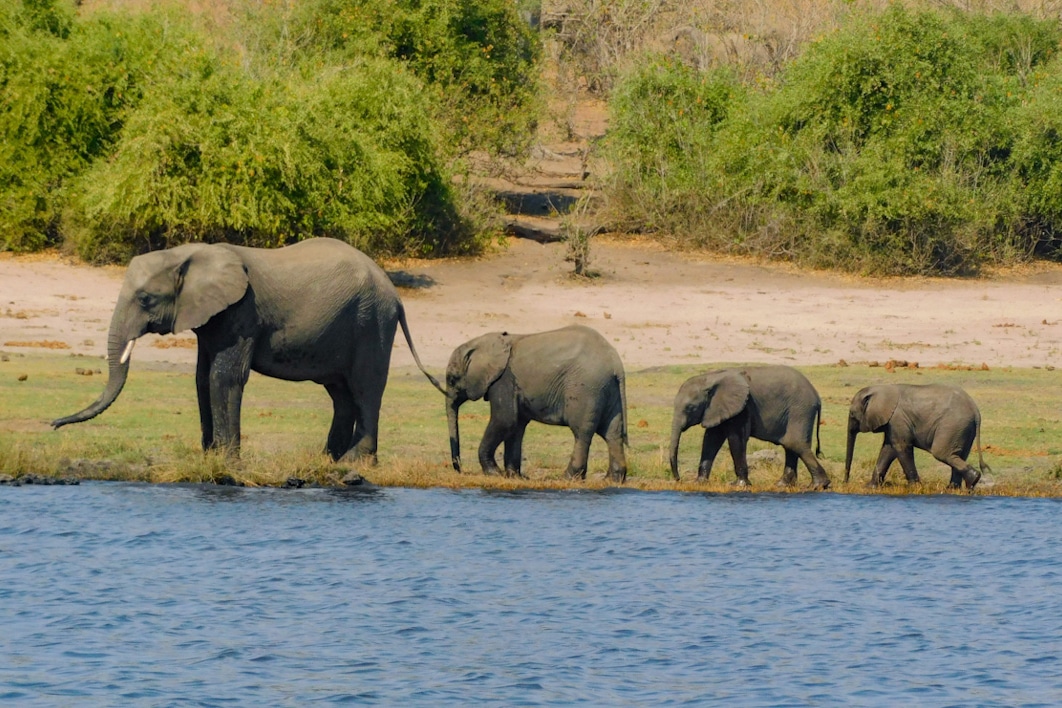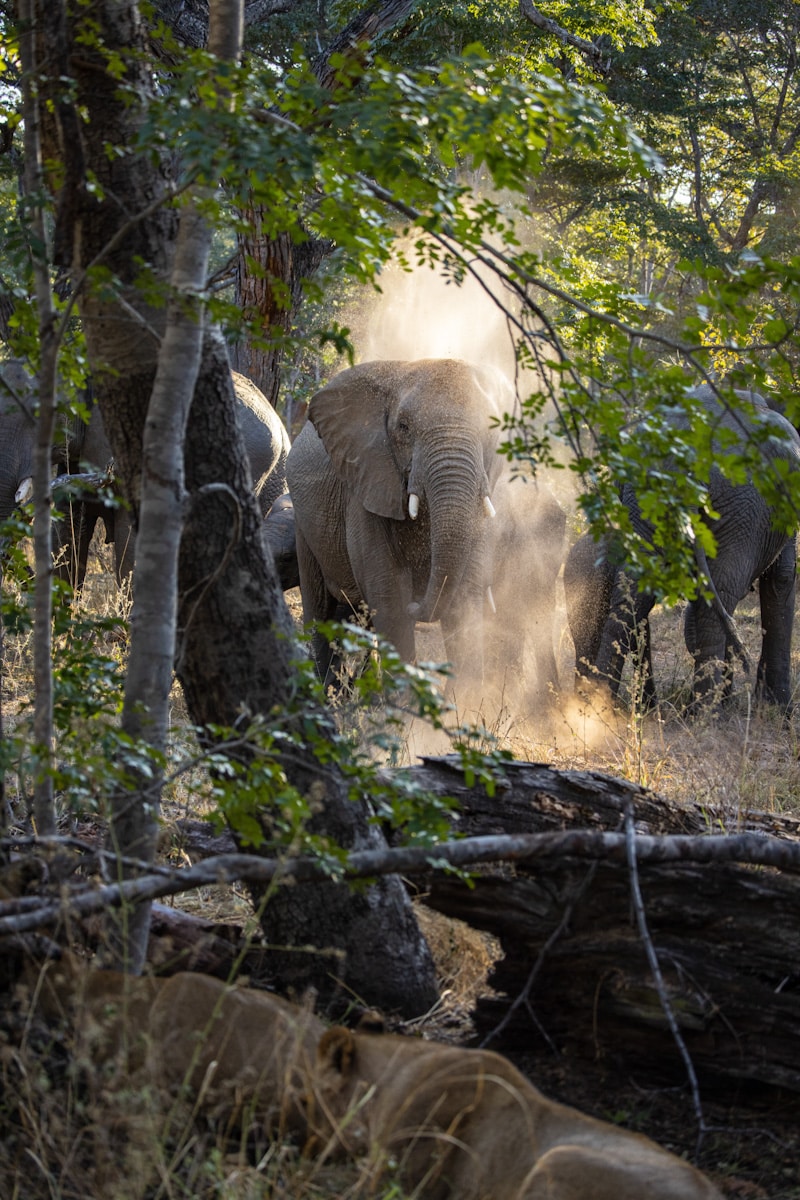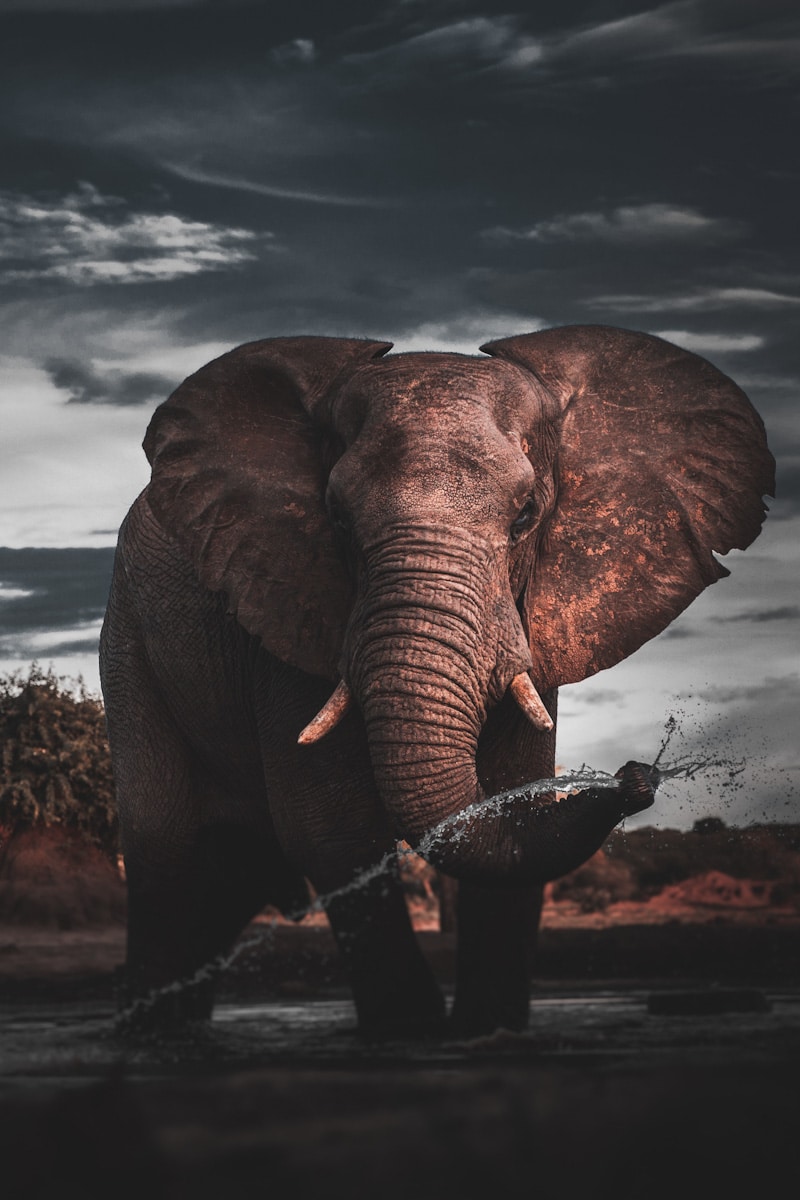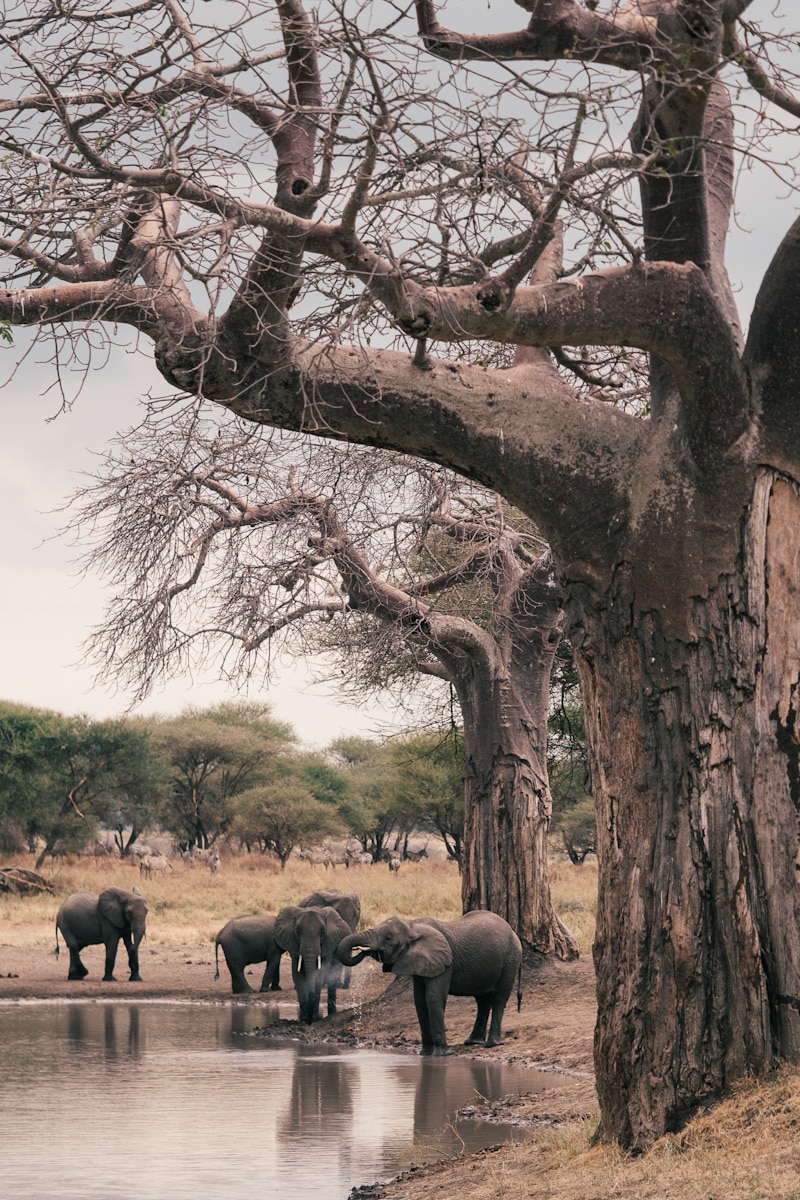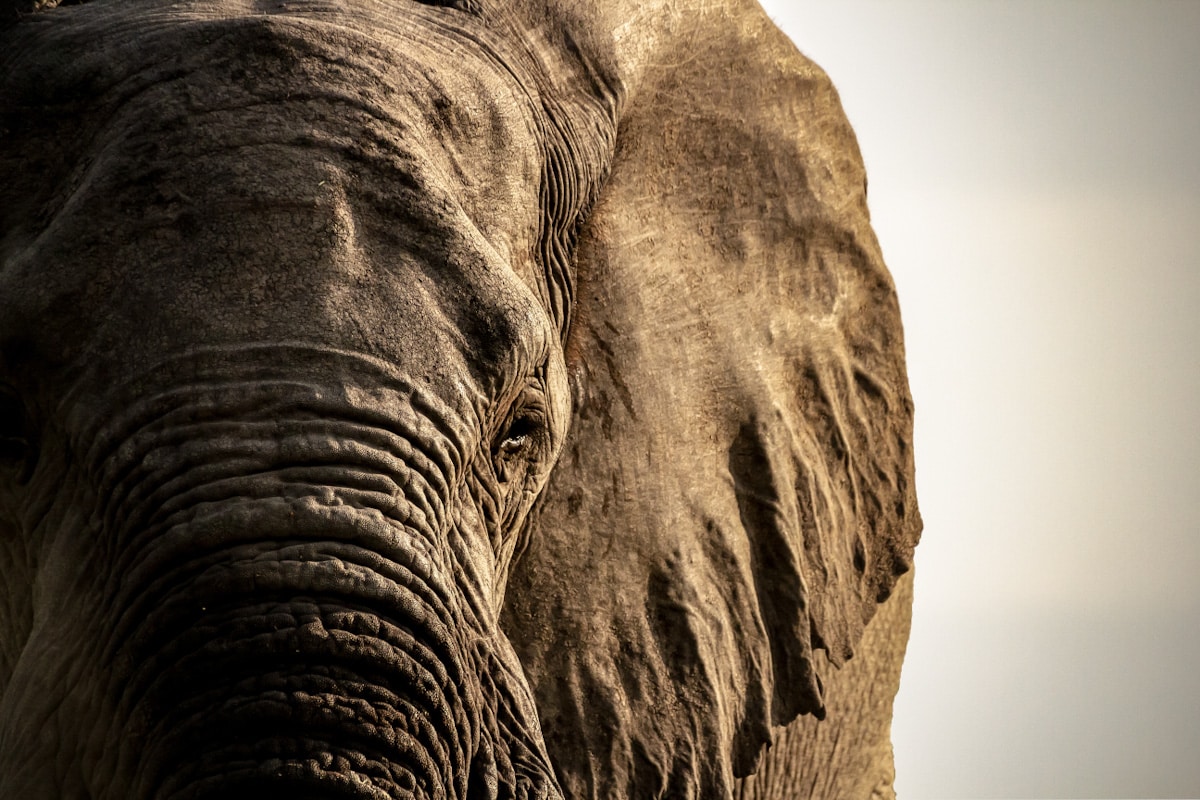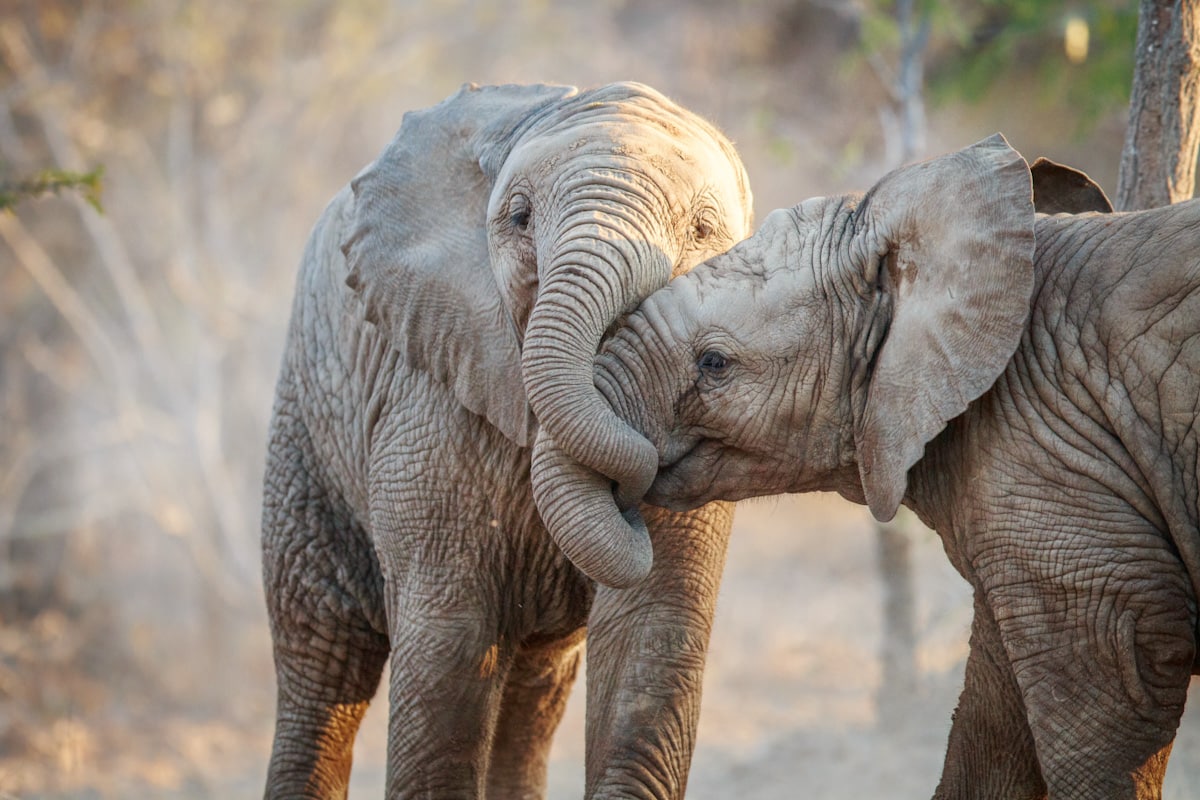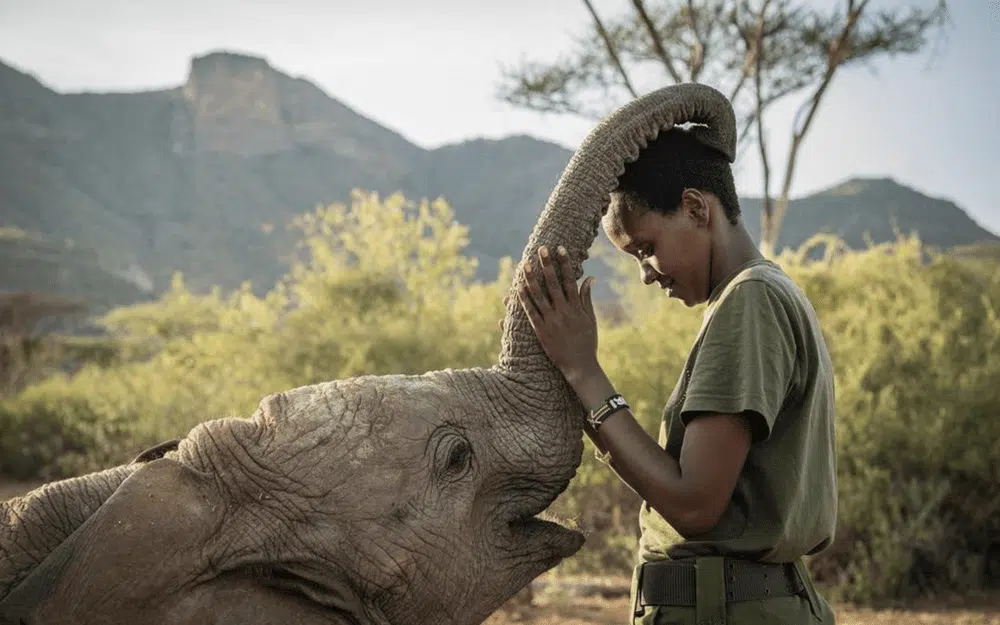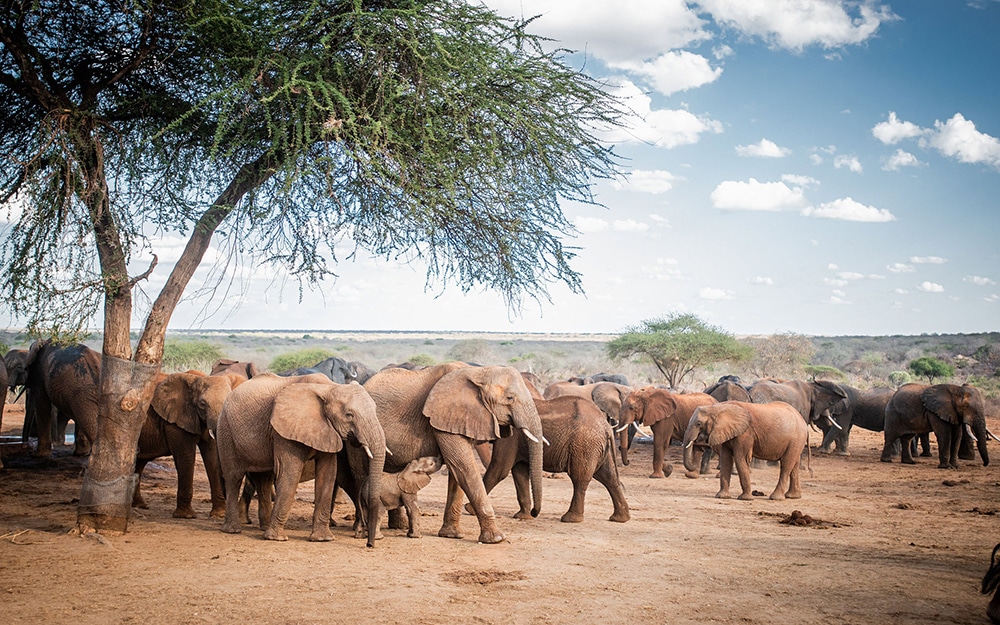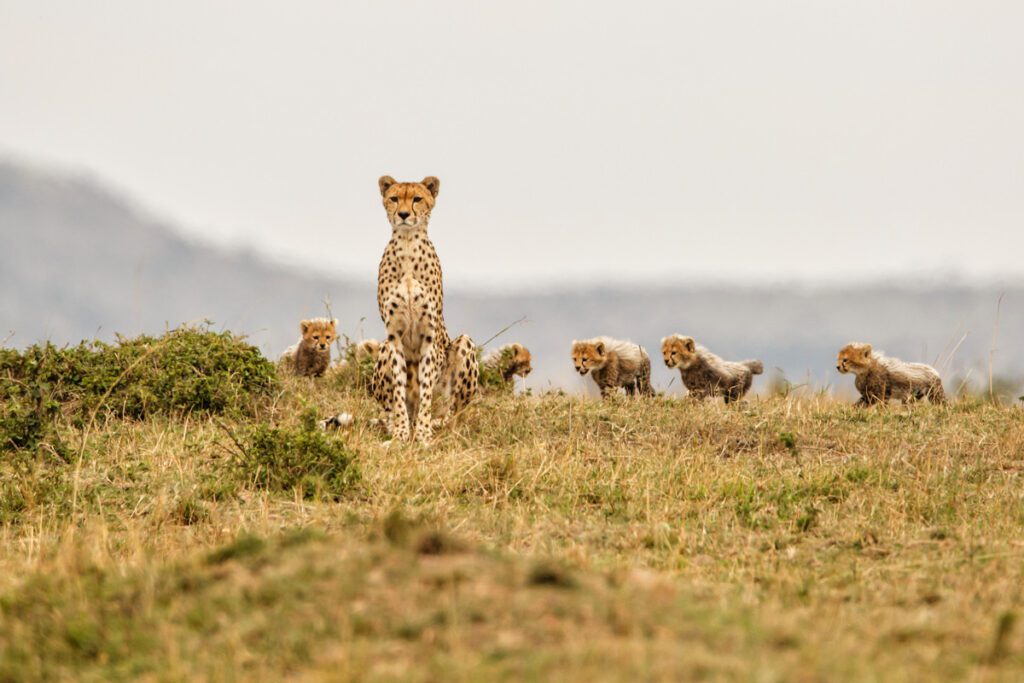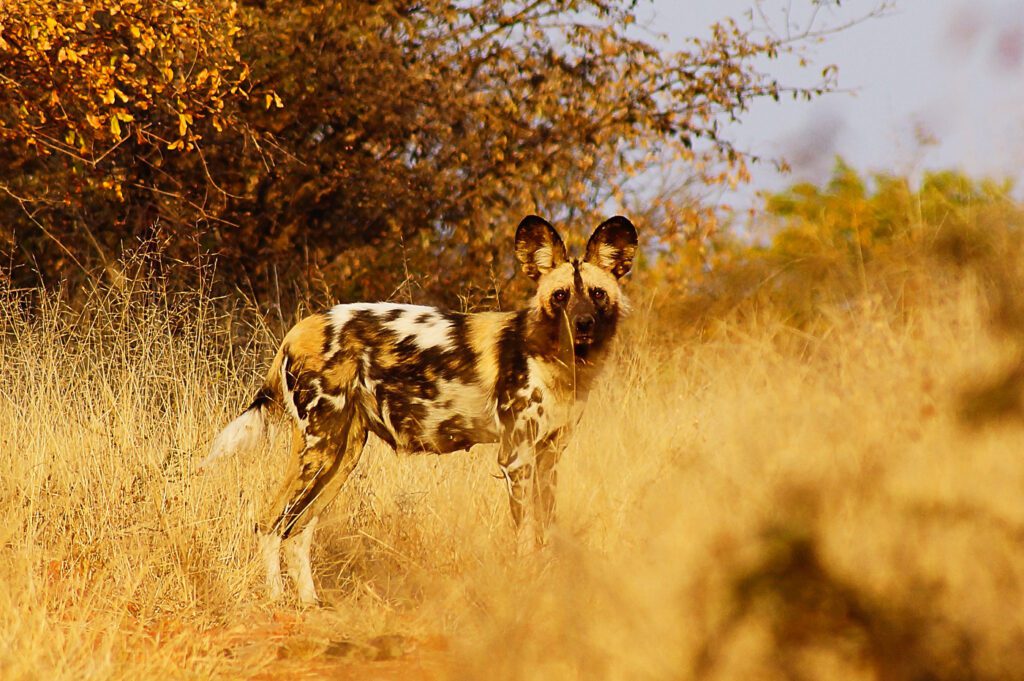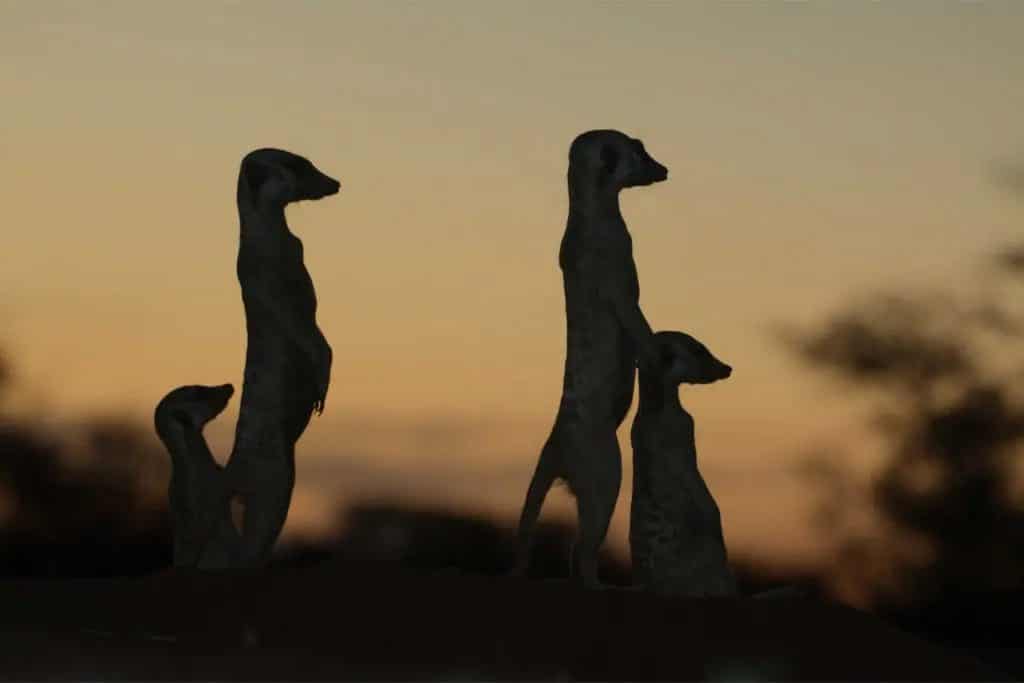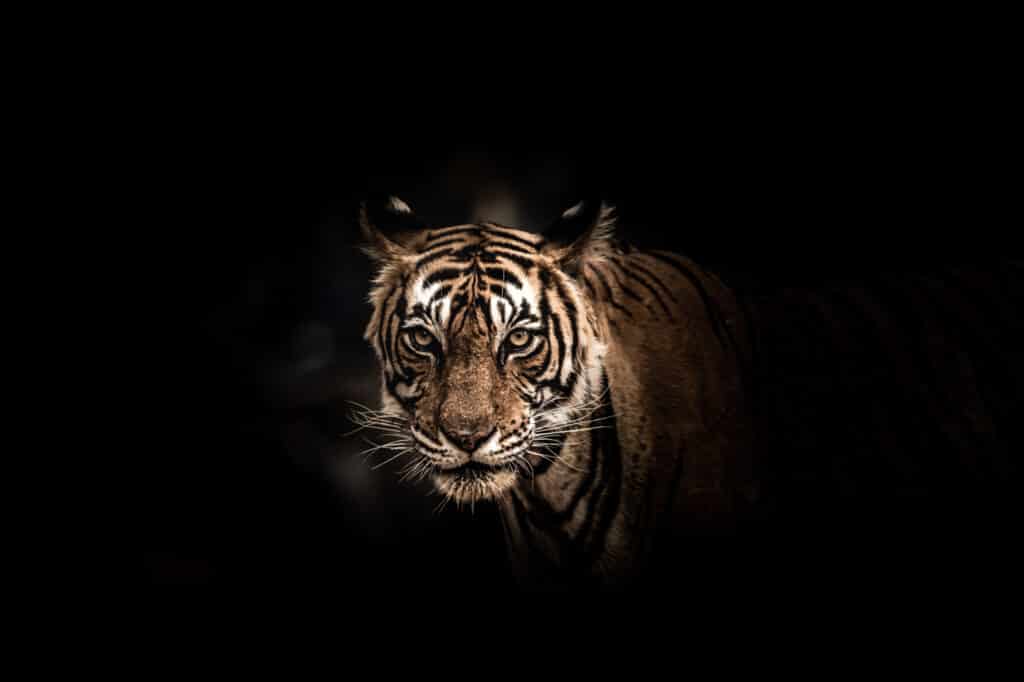FINDING DUMBO
Africa’s Best Elephant Habitats
Africa is the cradle of wildlife and biodiversity, and home to some of the most remarkable creatures on the planet. Among them, the African elephant stands tall as a symbol of strength, intelligence, and family bonds.
Witnessing these majestic beings in their natural habitat is a once-in-a-lifetime experience that leaves a lasting impression on any wildlife enthusiast.
Standing up to 10 feet (3m) tall and weighing up to 13,250 pounds (6,000kg), the largest of land mammals are truly an impressive and captivating sight.
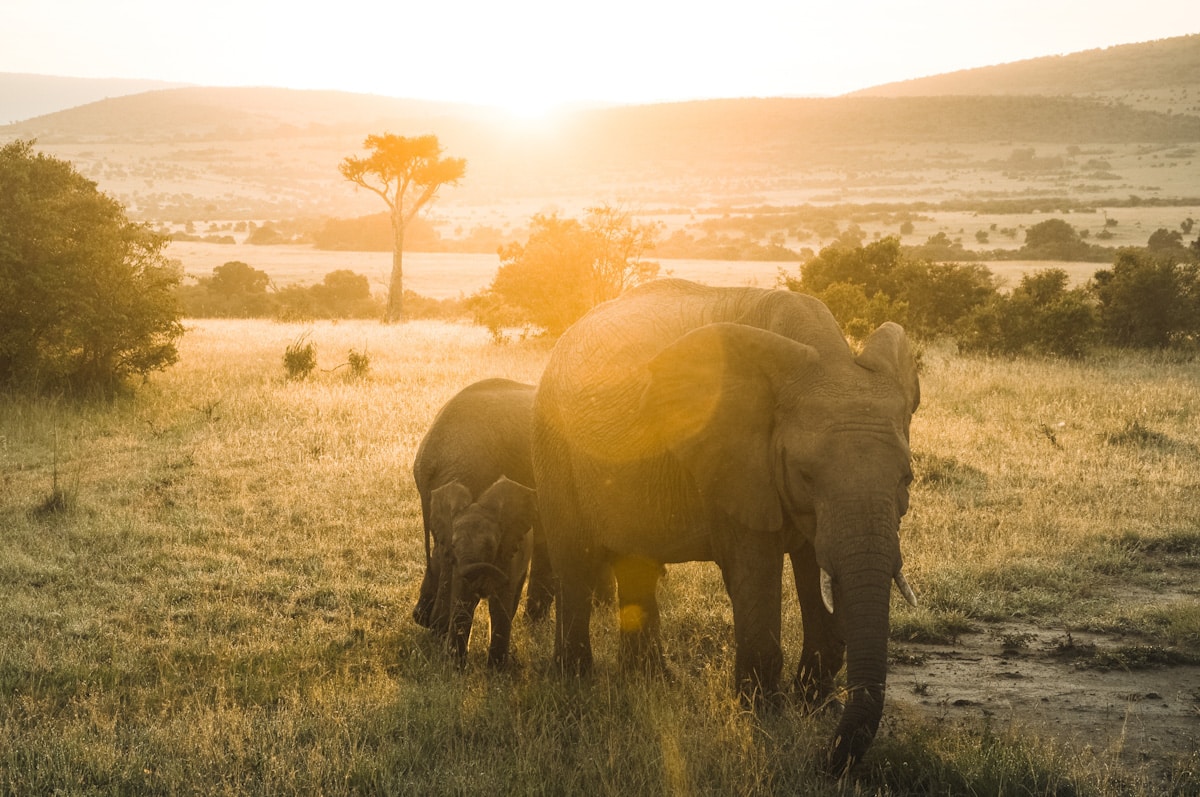
Over the last century, elephant numbers plummeted by as much as 90 percent. Hunting, ivory poaching, drought, and loss of habitat all took their toll on populations, and without intervention, they would have almost certainly become extinct.
Thankfully, research and awareness have illustrated the plight of elephants, and conservation efforts – including rehabilitating orphans, combating poaching, and restoring ecosystems – have all led to a slow but noticeable increase in numbers.
There is little doubt that one of Africa’s most iconic locals is also its most sought-after. Though found fairly extensively throughout the continent, there is little guarantee that they will be spotted, herds roaming vast distances from day to day and often tending away from more frequented areas.
Though elephants can be spotted in numerous destinations, simply seeing an elephant and having an intimate elephant encounter are experiences worlds apart. This is not to suggest that encounters entail touching or directly interacting with wild elephants, rather it is to see these magical creatures with far fewer, if any other visitors, and significantly closer and for longer than one might find in settings more accessible to the general public.
We explore five of the best places in Africa to see elephants up close, immersing ourselves in their world while respecting the delicate balance of nature. Embark on a journey to encounter these gentle giants with admiration and respect.
- Tsavo National Park, Kenya
- Amboseli National Park, Kenya
- Savute & Chobe, Botswana
- Hwange National Park, Zimbabwe
- Tarangire National Park, Tanzania
- Elephants Up Close
1: The Red Elephants of Tsavo, Kenya
Tsavo National Park is one of Kenya’s most populous elephant regions. The public park can be accessed on a day trip or for several nights in one of the park’s few properties.
Though a superb destination in its own right, two specific aspects make Tsavo particularly special.
The first is its ‘red’ elephants. Though elephant skin is extraordinarily thick – over six times thicker than ours – elephants are still prone to sunburn. Their wrinkles help to keep them cool, but they will often be seen coating themselves in mud or dust to increase their sun protection. In Tsavo, the soil contains high deposits of iron oxide, not only coating the ellies in this red dirt but also staining their skin, giving them a permanently red hue that is seen nowhere else in the world.
Secondly, Tsavo is home to a very special experience indeed: the Daphne Sheldrick Umani Springs Reintegration Unit. Located within Tsavo’s Kibwezi Forest, Umani Springs is an active rehabilitation sanctuary, taking in orphaned and physically-compromised elephants in the hope to nurture and reintroduce them to the wild. Sometimes, the care needed is simply too much, and 14 orphaned elephants remain in the care of the sanctuary. Their lives are kept as wild and natural as possible, the forest providing a wonderful habitat and the waterholes of the springs allowing them to bathe and interact just as they would in the wild.
For a select few guests staying at the lodge, this affords the rare opportunity to partake in the program, helping to feed and wash the orphans and directly contribute, through their actions and investments, to the care of these wonderful and endearing youngsters.
2: Spectacular Amboseli, Kenya
Nestled in the shadow of the iconic Mount Kilimanjaro, Kenya’s Amboseli National Park offers a mesmerizing backdrop for elephant encounters. As arguably the most renowned destination to witness elephants, Amboseli boasts a vast expanse of open savannahs and seasonal wetlands, providing ample resources for the thriving elephant population. Known for its picturesque scenes of elephants against the snow-capped mountain, Amboseli presents a unique opportunity to capture breathtaking photographs and immerse oneself in the beauty of these awe-inspiring creatures and their equally breathtaking surroundings.
Amboseli presents a variety of landscapes, from the mountain lowlands and forested regions to wide open plains. This places herds in wonderful contrast with their surroundings. Reaching for the topmost branches of acacia trees, caravanning across the grasslands or dwarfed by Africa’s highest peak, Amboseli presents these magnificent creatures in numerous facets of their daily lives.
Among several private tented camps in the Amboseli region, Angama Safari Camp is an exquisite property, established and designed specifically with the elephants in mind. Guided drives focus upon trailing the local herds, and the camp itself is nestled within a fever tree forest frequented by some of the park’s largest tuskers.
Created sensitively so as not to impact ecosystems – or your spectacular views of them – Angama floats upon the landscape, its waves of canvas reflecting the curvature of Kilimanjaro’s slopes that can be viewed from every private suite.
3: Savute’s Swimming Elephants, Botswana
Dubbed the “Land of Giants,” Chobe National Park in Botswana is a haven for elephant enthusiasts. Situated along the Chobe River, this park hosts one of the largest elephant populations in Africa, drawing visitors from all corners of the world.
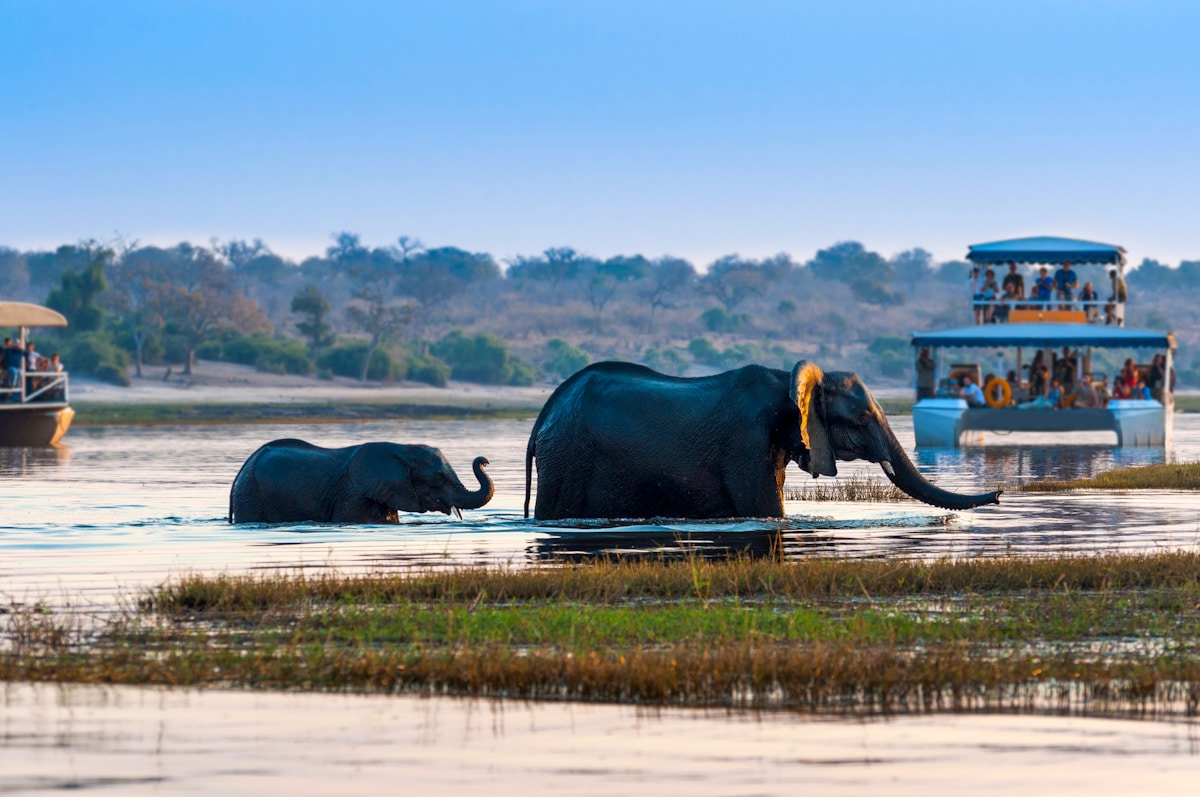
Lying within this wonderfully abundant region lies Savute, a remote corner of the park almost exclusively accessible by a small handful of private camps. This is one of the most naturally abundant regions in the whole of Africa, and there is far more life that will captivate and enthrall than elephants alone.
The dry season, in particular, offers an incredible spectacle of elephants congregating near the Savute Channel and Linyanti River to quench their thirst and socialize, providing a rare glimpse into their intricate family dynamics. This is particularly magical when witnessing the newest members of the herds. The bond between adult and infant extends beyond parent and child, and unrelated females can be seen teaching and nurturing babies, though it is their mother who fulfills this role in greater part.
So acute is their bond that a mother will risk her life for her child, but sadly tragedy does sometimes strike. A mother will mourn the loss to such an extent that she will leave her herd for days on end until the need for food and water outweighs her tangible heartbreak.
In many destinations, elephant can be observed on the plains and seeking sustenance from the sporadic shrubbery, but Savute is one of the few locations to see them bathing, swimming, and submerging almost completely in the region’s waterways. Embarking on a river safari amidst the trumpeting calls and playful splashes is an experience that lingers in the memory long after the journey concludes.
4: Hwange on Foot, Zimbabwe
Stretching across the western reaches of Zimbabwe, Hwange National Park is one of Africa’s largest conservation areas and a sanctuary for diverse wildlife, including elephants. Known for its extensive elephant population, Hwange offers a front-row seat to observe these gentle giants in their natural environment. Guided walking safaris add an element of thrill and intimacy to the encounter, allowing visitors to connect with the wilderness on a deeper level. As dusk descends over the vast savannah, witnessing the elephants’ graceful movements against the setting sun creeping through the trees is a truly magical experience.
Zimbabwe isn’t renowned as a safari destination and lacks both the abundance and variety of life when compared to other more familiar safari locations. But if elephants are your quarry, Hwange is certainly well-advised. The park also combines well with a more extensive itinerary, taking in, for example, Nairobi and the Maasai Mara before venturing to Botswana’s Okavango Delta and the magical South African coast.
5: Elephants en Masse, Tarangire, Tanzania
Nestled in northern Tanzania, Tarangire National Park offers a breathtaking landscape adorned with ancient baobab trees and lush riverbeds. This park’s distinguishing feature is its seasonal movement of elephants, where herds migrate in search of water during the dry season. As the water sources dwindle, witnessing the majestic elephants congregating around the Tarangire River is a spectacle like no other. Apart from elephants, the park teems with diverse wildlife, including lion, leopard, wild dogs, giraffe and jackals, presenting an opportunity for a comprehensive African safari experience.
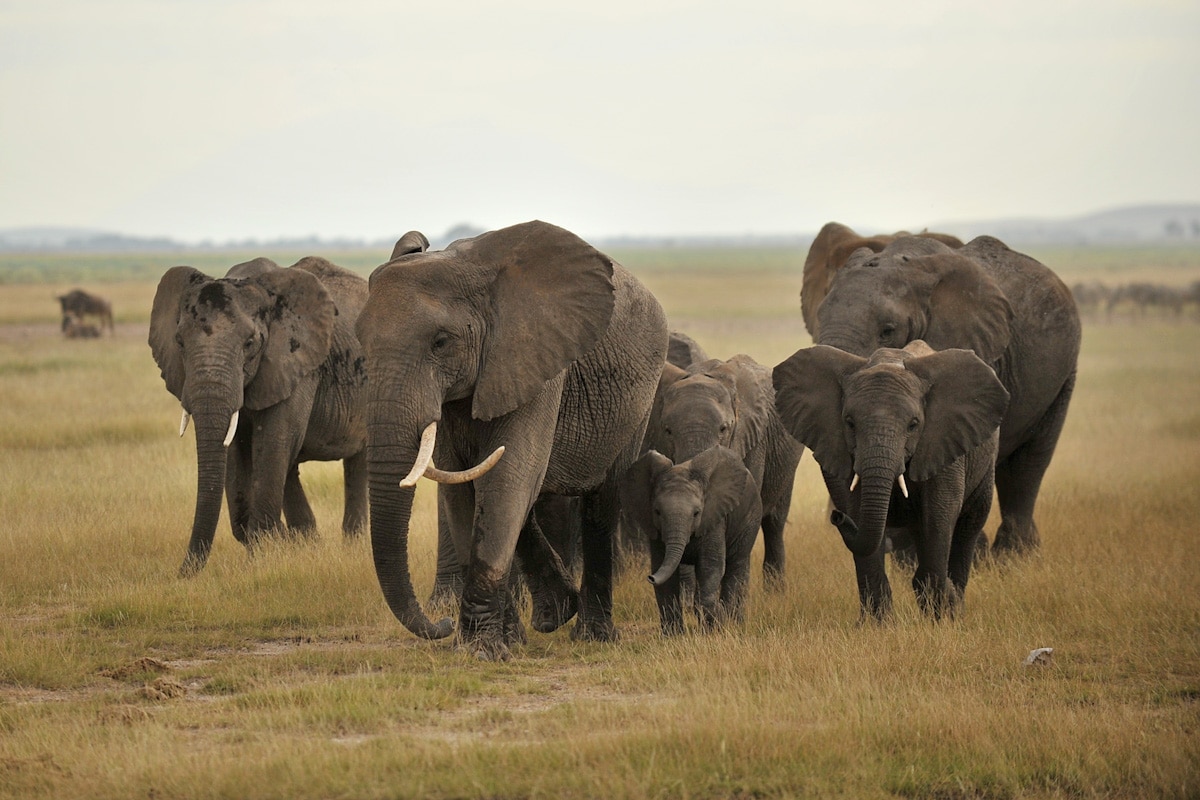
Though perhaps not as abundant as in other regions, Tarangire is noted for the size of its herds, sometimes incorporating over 300 individuals. It is also home to the lesser migration. Shadowed by the scale and renown of the Great Migration, Tarangire’s mammalian passage remains impressive as, from June to November each year, over a quarter of a million wildebeest and zebra pass through the park in search of water in the dry season.
Elephants Up Close
It must be stressed that elephant handling is almost always not ethical. Some zoos will allow guests to walk with elephants and even feed and pet them, but these experiences are only possible with detrimental captivity.
On rare occasions, it may be possible to enjoy such interactions, but such extenuating circumstances are incredibly rare, don’t account for the vast majority of captive elephant experiences and we do not condone such operations.
However, there are ways in which one can gain a uniquely personal perspective of Africa’s elephants, in addition to the Sheldrick Reintegration Unit previously mentioned.
Reteti Elephant Sanctuary and the Sheldrick Wildlife Trust both take in sick and orphaned elephants, nurturing them back to health before, ideally, rehabilitating them into the wild.
Private tours behind the scenes of these havens allow guests to understand the vital work undertaken by these organizations and be captivated by the infants’ feeding time.
At both Reteti and the Sheldrick Trust, handling is strictly minimized, a single handler caring for each individual. These actions prevent the elephants from becoming overly dependent on humans or too familiar with their presence, better enabling them to one day return to the wild.
Supporting such organizations directly contributes to the ongoing need for elephant conservation and protection.
It isn’t only the sheer size of elephants that draws our fascination and adoration. Acutely intelligent and, despite their dissimilarity to humans, conveying surprisingly relatable emotions and movements, there is something intangible about this fixation.
Elephants have been documented playing with humans, kicking balls, distinctly communicating through body language and even painting recognizable pictures.
With a temporal lobe (that part of the brain associated with memory) far larger and denser than found in humans, the old adage of an elephant never forgetting is certainly founded in truth. This has been displayed numerous times, and humans have been greeted fondly by elephants they helped years previously or been subject to their wrath if the human’s prior intentions were harmful.
These destinations offer unique and unparalleled encounters with these awe-inspiring creatures. From the picturesque backdrop of Amboseli to the congregations of giants in the waterways of Savute and Hwange, each destination leaves an indelible mark on the hearts of those who visit. It is crucial to approach these experiences with the utmost respect for nature and its delicate balance. By supporting responsible tourism and conservation efforts, we ensure that future generations can continue to marvel at the grandeur of African elephants while preserving the sanctity of their habitats. So, embark on this extraordinary journey, and let the grace of these endearing creatures forever enrich your soul.
